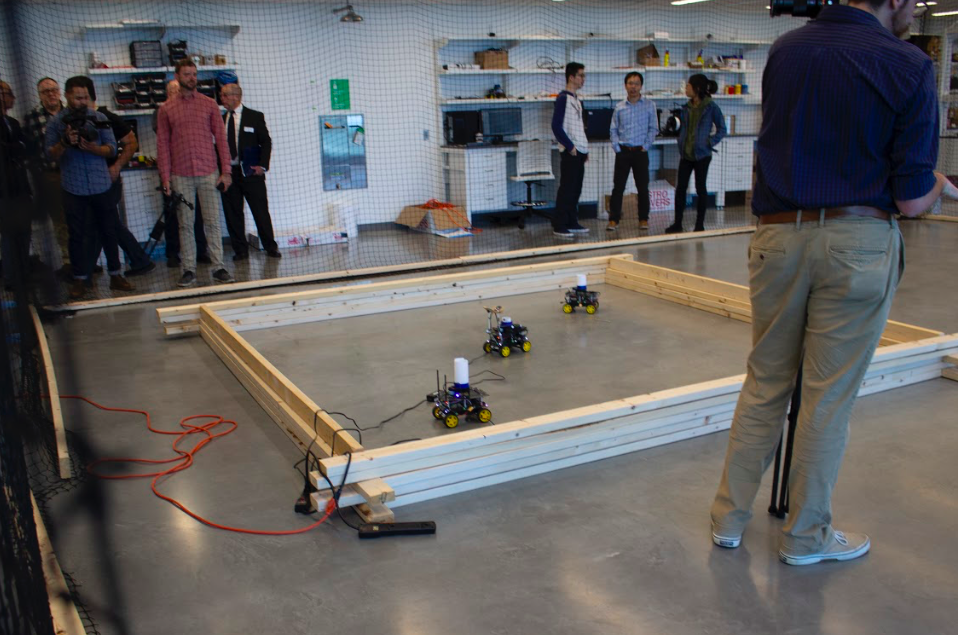The building’s design gives students a unique experience
The University of Rhode Island’s College of Engineering’s newest building, the Fascitelli Center for Advanced Engineering, is viewed as one of the most technologically-exceptional facilities on the East Coast.
The building was essentially a result of two important aspects that the college wanted to integrate to take the world of engineering to a new level.
“The first push of the building was for research space,” said Raymond M. Wright, dean of the College of Engineering. “To transform the five buildings that were on campus that really didn’t have much research space, because increasingly the college is becoming more focused on research. Teaching is still a large part of the mission but integrating undergraduate and graduate students together doing research is probably the best way to learn.”
The second aspect was to ensure that there was space that allows people to build and make things, in order to incorporate the creative side of engineering.
“It’s all about the excitement of seeing engineering,” Wright said. “We have a maker space and we have 3D printers. The reason you see glass all over is that when you walk through the building you see everything that is going on. All the walls are glass on the inside of the research labs. When you look into the labs you can see someone playing with drones or building machines that can make clean water. The experience is more about seeing and being a part of it as an undergraduate. It’s being a part of the research.”
The most prominent feature of this building is its glass doors and walls. According to Wright, the glass of the building is both a metaphor and a physical manifestation of transparency and collaboration.
The vision of the principal architect of the building, Terry Steelman, was that its infrastructure would act as a showcase to display the research that is happening inside it.
“In most buildings, the research happens behind closed doors,” Steelman said. “You wouldn’t know what they are making in there. Whereas in this building, if you are an undergraduate, even if you’re not, if you walked down a hallway, you’re going to see the things that the engineers are doing, which will make you want to be a part of it.”
One of the core features of this building’s unique infrastructure was based on bringing all the different disciplines of engineering together.
“When we had five buildings, we had mechanical engineers here and chemical engineers all the way over there,” Wright said. “Each of their disciplines did things independently, but when you put those two different disciplines together, they would often come up with things that are new.”
Steelman emphasized that the building was designed to stimulate interdisciplinary discovery so that students can be educated differently and researchers can collaborate across disciplines.
“I really like how close the labs are in proximity,” said Jessica Alesio, a third-year graduate student in chemical engineering. “I can work with environmental engineers and different people in my department. It is very helpful for collaborative work. It’s not quite up and running yet but the Shimadzu research core downstairs is going to be instrumental to all of our research.”
This $150 million project is home to some of the best equipment that redefines engineering in all of its disciplines. It has almost $8 million worth of cutting-edge equipment that provides a new world for research.
“We bought cameras that will take hundreds and thousands of frames so that you can slow down motion,” Wright said. “If you take a carbon fiber piece of a submarine and there’s a missile hitting the side of the submarine, it will slow down to be able to track to see exactly what happens and how to protect better. Scanning electron microscopes that will allow you to see at the nano level. It’s a whole new world for research.”
Additionally, the building offers access to the equipment to everyone within the department.
“The other difference in this facility is the equipment is set up in core labs, which means that it is shared by all researchers,” Wright said. “Previously a professor would get a grant, buy a piece of equipment and it can only be used by that particular researcher. The idea of the core labs is that they have equipment of high value that is shared by everybody.”
Engineering students find the new building much more progressive and favorable than the older engineering buildings on campus.
“The capstone rooms are super helpful,” said Natalie Wilcox, a junior in civil engineering. “There are a lot of computer set-ups in there and we have to do AutoCAD. We have a lot to do with that for capstone. We’re in civil engineering and we do have a concrete mixing lab which is going to be very useful in the concrete canoe competition. So we’re really excited to use it in the spring.”
The Fascitelli Center for Advanced Engineering also has a state-of-the-art intelligent control and robotics lab, multi-million dollar microscopes, specialized design labs, interactive 24-hour conference rooms and a cafe that students can easily use.

